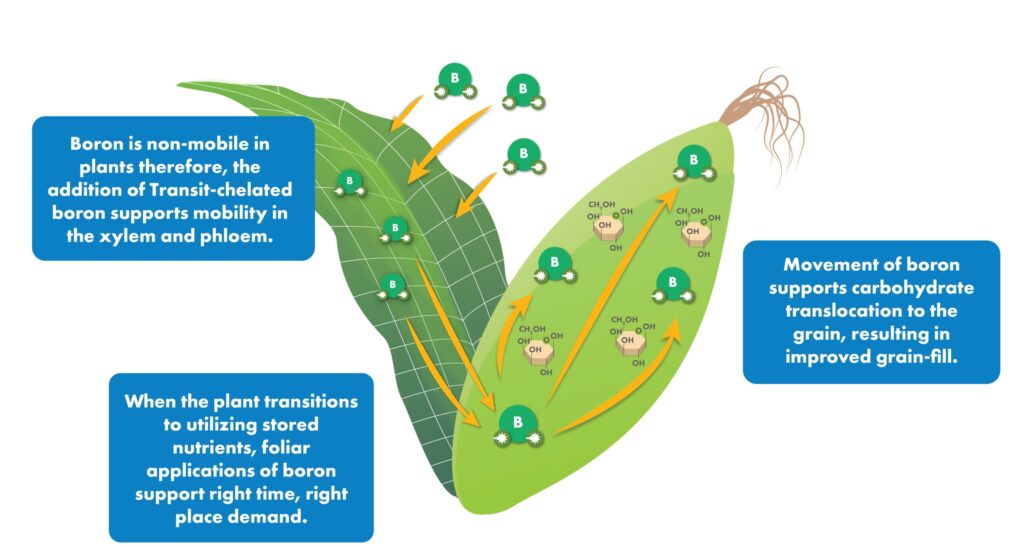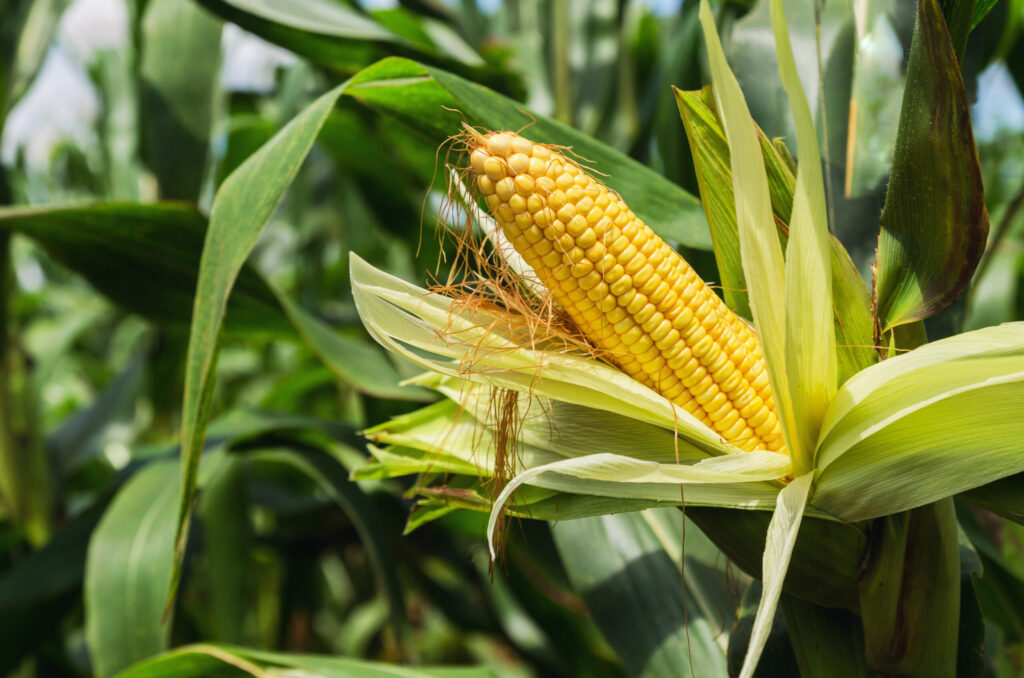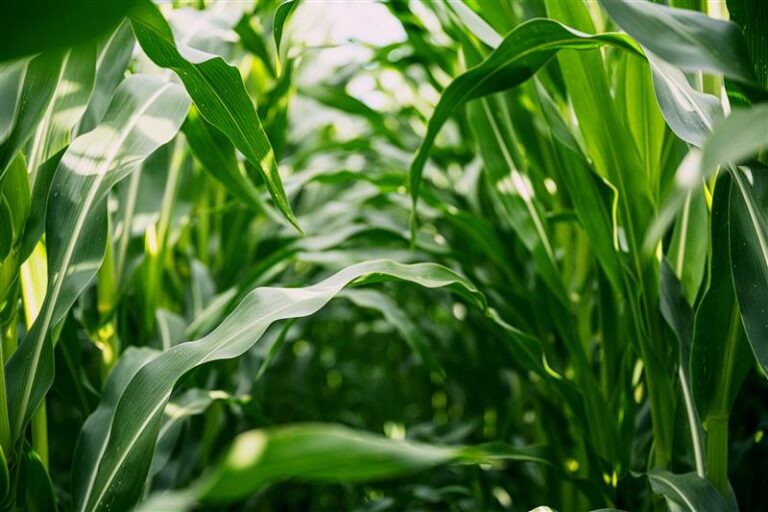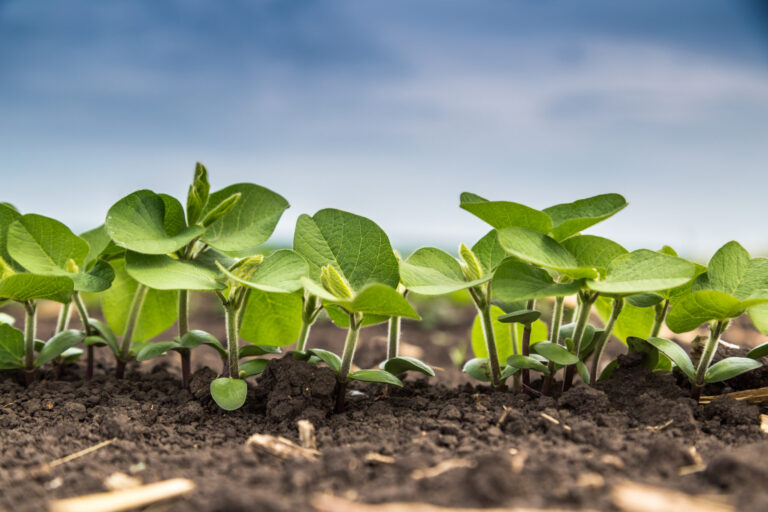During grain fill, the corn plant transitions from active vegetative growth to prioritizing the redistribution of carbohydrates toward developing kernels. While maximum kernel number is largely determined at pollination, final yield still depends on the plant’s ability to produce and allocate resources to the ear. The strength of that sink and the plant’s capacity to support it through continued photosynthesis determine whether kernels develop fully and uniformly or if serious tip-back and poor kernel fill occur.
Even with sound fertility and hybrid selection, suboptimal kernel fill is common under stress conditions such as drought, heat, or cloudy environments. However, in fields with minimal stress, there is still room to optimize yield potential. Grain fill can be maximized by improving grain fill intensity, how rapidly the kernels accumulate carbohydrates, or grain fill duration, the length of time the plant continues to move carbohydrates into the developing kernels. Biostimulants offer value by influencing levers that contribute to grain fill intensity and duration.
Grain Fill Intensity
Grain fill intensity is driven by the plant’s ability to produce and transport photosynthates efficiently. Boron plays a critical role in this movement, facilitating sugar transport and reproductive tissue development. Ensuring mobile nutrients are available and accessible during peak demand can increase the rate of carbohydrate mobility into the kernels, raising overall grain fill intensity.
Grain Fill Duration
The key to extending the duration of carbohydrate movement into the developing kernels is delaying senescence in the leaves. This allows photosynthesis and nutrient movement to remain active longer. During grain fill, about 20% of carbohydrates come from leaf remobilization, while 80% comes from current photosynthesis. The percentage coming from leaf remobilization can double to 40% during stress if photosynthesis is limited. Supporting late-season plant performance can help maintain green leaf area and metabolic activity. This prolongs the functional period for carbohydrate movement and increases the final kernel weight.
Carbohydrates Storage & Increased Photosynthetic Capacity
Last month, we discussed increasing leaf area index and improving photosynthesis with FlexForce® biostimulant. FlexForce increases leaf area, improves chlorophyll density, optimizes photosynthetic pathways, and provides complementary nutrition to capitalize on the additional growth. With the increase in leaf area and improvement in the photosynthetic process, FlexForce supports the plant in accumulating larger stores of carbohydrates just in time for grain fill, setting the crop up with a larger leaf area and optimized photosynthetic pathways.
Remobilization of Carbohydrates in the Leaves
With a larger, more efficient source of carbohydrates, the crop is positioned for success pre-grain fill. However, in order to take advantage of that larger source and drive grain fill, it’s critical that the plant can move those sugars into the ear where they’re needed. Built with our organic acid biostimulant Transit® and boron, BoronBoost® promotes increased translocation of carbohydrates from the leaves to the kernel during reproductive growth and provides highly mobile boron, supporting right place, right time demand. The tandem approach of BoronBoost influences grain fill intensity and duration to push corn plants for a strong finish at harvest.
When used together, FlexForce and BoronBoost support both the supply and movement of carbohydrates during grain fill. FlexForce increases the amount of sugars available through improved photosynthetic capacity, while BoronBoost helps ensure those sugars are effectively moved to the developing kernels. This combination supports more consistent grain fill by addressing both the source and sink sides of the equation, contributing to improvements in both grain fill intensity and duration.







